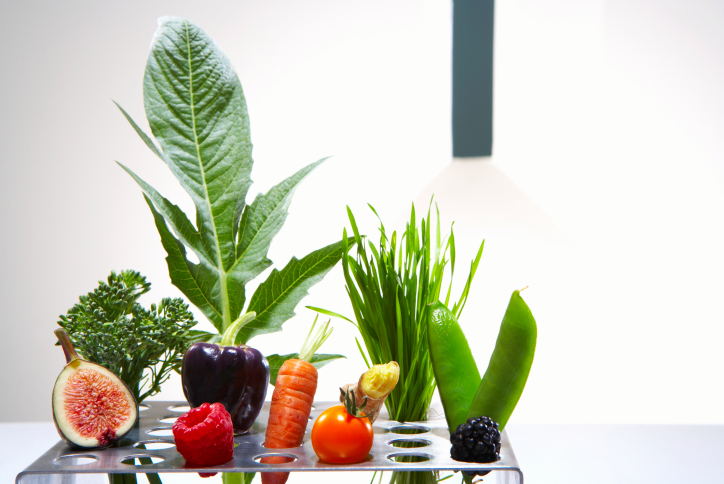- The EU controls the circulation of plants within the Union and those originating in third countries to combat the emergence and spread of harmful organisms
- Countries exporting these products must have competent plant health authorities
EXPORTS
How to export plant products to the Europe Union
In order to access the European market, SME plant and plant product producers in Latin America and the Caribbean must be acquainted with the four major stages described in EU regulations: country authorization, establishment authorization, plant health certification and control.

HIGHLIGHTS
Many of the large Latin American companies producing plant products have been exporting to European countries for a long time. Given their size, they are equipped with strong international trade expert teams to advise and provide them with information on the procedures required for their merchandise to reach European factories or store shelves.
Small and medium enterprises (SMEs) from the region can also access this important market comprised by the European Union (EU), with its 28 countries and over 500 million inhabitants, over 7% of the world’s total population.
In order to carry this out, first it is important to become acquainted, through adequate advice, with basic information regarding plant and plant product export procedures to the EU. In the first place, for instance, to know that most regulations on this subject have been integrated and are common to the 28 members of the Union. In other words, if this product meets the standards for selling in the Parisian market it could also generally be sold at supermarkets in Dresden or served at a local London restaurant.
In second place, regarding procedures on this specific subject, SMEs must know that in order to prevent any risk to human food and animal feed and to guarantee healthy and good quality crops, the EU places great emphasis on plant and crop protection (fruits, horticulture products, etc.).
The EU controls the circulation of plants within the Union and those originating in third countries, in order to combat the emergence and spread of harmful organisms. The EU also ensures that plant health products are not harmful to health or the environment, specifically through an authorization system and by establishing maximum residue limits in plants.
Under European procedures, in order for a producer from a non-EU country to export and market plants and/or plant products to the European market, it must comply with the following four stages:
Stage 1: authorization
Products must originate from a country that is authorized to export the merchandise to the European Union. In this regard, there must be a competent authority responsible for the official inspection and control throughout the entire production chain. It must have the necessary structure and resources to carry out an effective inspection and provide credible public health guarantees and plant health attestations to accompany the products intended for the European Union.
National phytosanitary authorities must also ensure compliance with all pertinent plant health standards.
Stage 2: registration of producing establishments
Following approval, competent national authorities must prepare a list of establishments that are authorized to produce plant products. In contrast to what occurs with meat and meat products, the EU does not intervene in the process, which is carried out by local authorities themselves.
In order to determine which establishments are authorized, national authorities must consider four issues.
In the first place, they must guarantee compliance with EU hygiene and public health requirements. These requirements are designed to assure high standard levels and to prevent product contamination throughout the different processes.
In second place, primary production units must be under a hygiene and phytosanitary surveillance program carried out by a competent authority. Plant product imports are only authorized if they originate from registered establishments (processing plants, frozen storage facilities and warehouses) that have been satisfactorily inspected by the competent authority of the exporting country in line with EU requirements.
Competent authorities must provide sufficient guarantees and are responsible for carrying out regular inspections and applying corrective measures, if applicable. A list of these establishments must be kept by competent authorities and must be made available to EU authorities upon request.
In third place, there are specific requirements for importing fruits and vegetables susceptible to certain pests. These products can only be imported if they come from approved production regions. The exporting country’s competent authority must provide adequate plant protection management guarantees in the region and strictly monitor the pest-free regions (areas) to ensure keeping status. Additionally, a control plan for contaminants, such as pesticides, must be in place to verify compliance with EU requirements.
Finally, third-country imports are only allowed if the European importer assumes responsibility for the product and is registered in the official register of the EU country where he is established.
The EU’s Food and Veterinary Office (FVO) makes inspections to confirm compliance with the aforementioned requirements. Hence, an inspection mission can be formed by the exporting country and the European Commission.
Stage 3: plant health certification
If the two previous stages were successfully completed, the health authority will issue a plant health certificate to the establishment that is officially valid throughout the EU.
Stage 4: controls
Official inspectors at border inspection posts (BIP) can verify compliance with what was certified (for instance, that products originate from an authorized country and that they have been produced under plant health and hygiene requirements laid down by the European Commission and the EU country of destination).
Each shipment is subject to systematic documentary and identity checks, and to physical controls, if required. The frequency of physical checks depends on the product’s risk level and results from previous inspections. Shipments that do not meet EU legislation requirements can be destroyed or, under certain circumstances, sent back to the exporting country within 60 days.


Follow Us